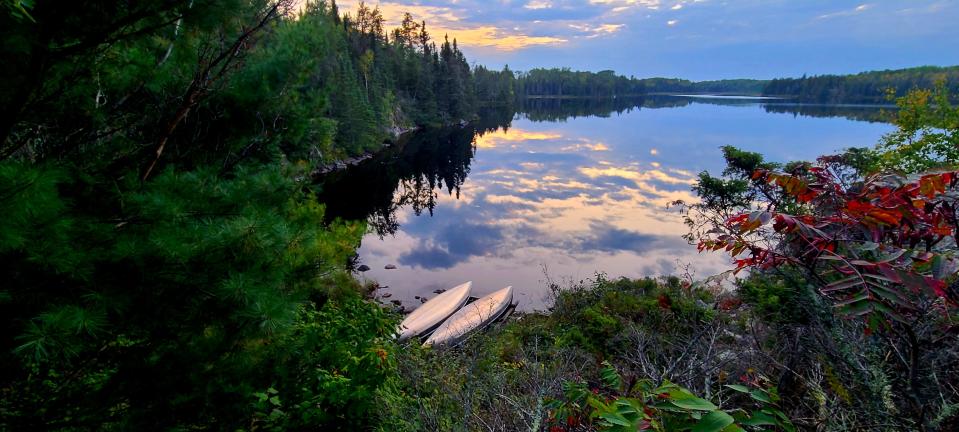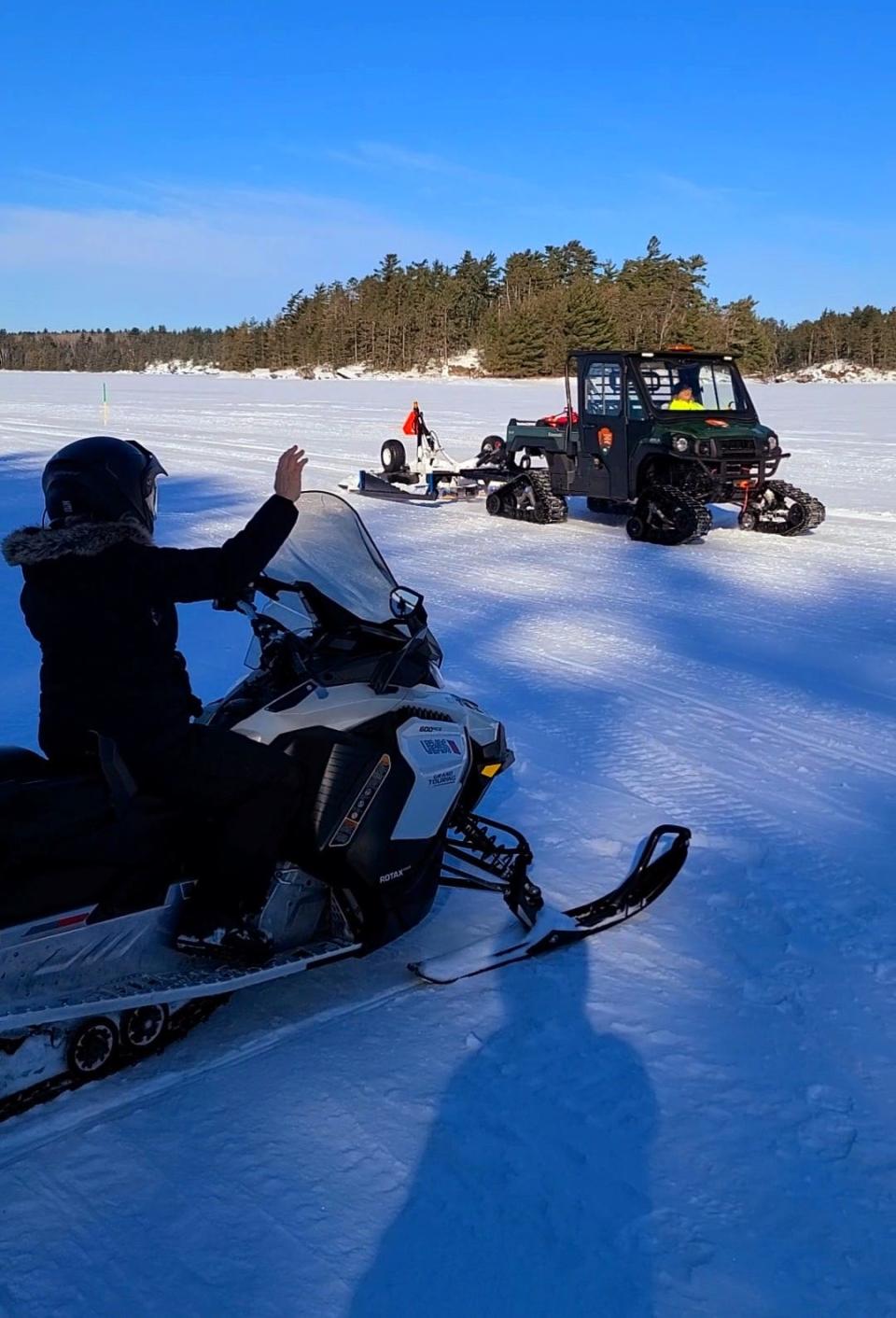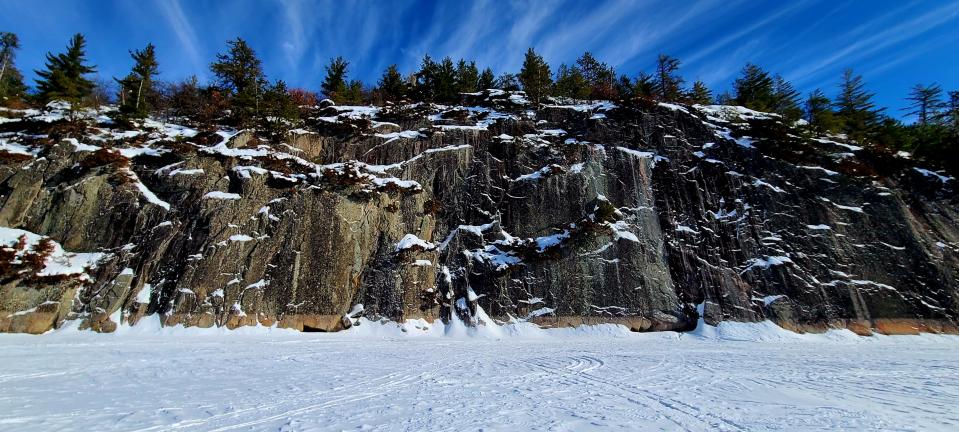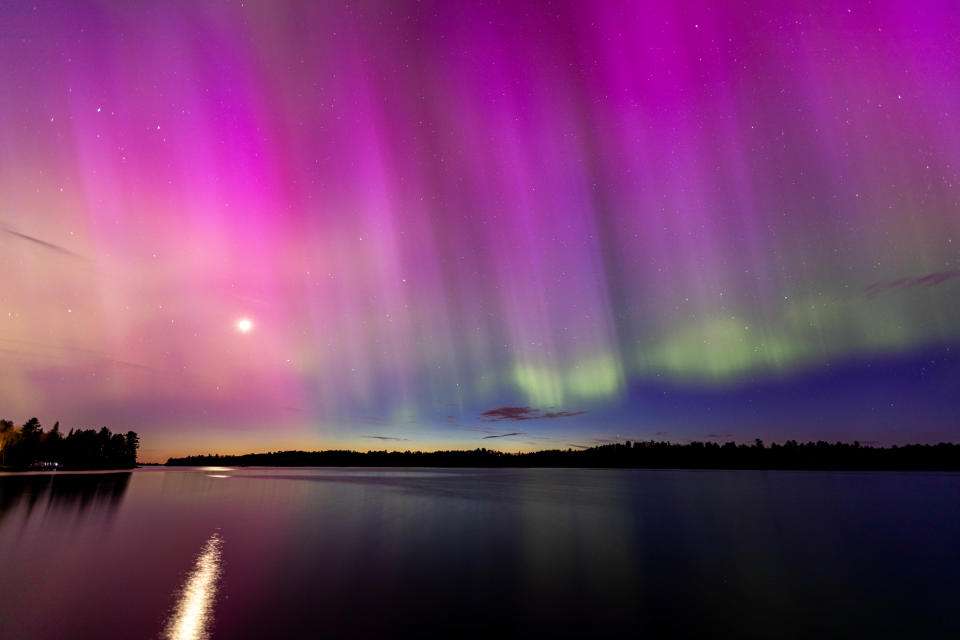Why Voyageurs National Park in Minnesota is a hidden well of natural beauty
Just like you can’t judge a book by its cover, you can’t judge a national park by its numbers. Voyageurs National Park in Minnesota is one of the least visited national parks in America.
“I think it’s one of the best kept secrets,” said Mark Miller, the park’s acting chief of Interpretation, Education, Visitor Services, Public Affairs and Partnerships.
“We are a water-based park predominantly, with approximately 40% of our acreage being water,” he said.
In the summer, Voyageurs’ lakes are prime for water recreation like canoeing, fishing and just relaxing on houseboats “complete with a hot tub and a waterslide off the upper deck.” In the winter, Miller said, “People love to come for 110 miles of snowmobile trails that we have, a number of miles worth of groomed cross country ski trails, (and) ice fishing.
Here’s what travelers should know about Voyageurs, the latest national park in USA TODAY’s yearlong series.
What is so special about Voyageurs National Park?

“The park is so well known for its amazing landscapes, the 218,000 acres of woods and waters that border on the boreal forest,” Miller said. “From an ecology standpoint, great stands of white pines, red pines and the ecosystem that holds megafauna like moose and bear and wolves, but also the geology of the park, rocks up to 2.8 billion – with a B – years old, some of the oldest rocks here in the heart of the continent of North America. Our lakes are lined with this amazing, rocky shoreline of exposed granite with pine tree-studded forests.”
He noted that 99% of the park’s campsites have lakefront views, which is unique among national parks. They’re perfect spots to sit back and take in the night sky.
“We are a certified International Dark Sky Park and what that means is incredible dark skies that we strive to preserve and protect so that people can come and have an opportunity to see the Milky Way in all its glory, constellations like they've never seen before, and the northern light, the aurora borealis, shimmering in waves, the orange, red, pink and green,” Miller said.
Where is Voyageurs located?
Voyageurs National Park is located in Northern Minnesota, almost to Canada. It’s about four-and-a-half hours away from the Twin Cities of Minneapolis-Saint Paul by car.
The gateway city of International Falls is about 12 miles away from the park. There is a small airport in International Falls, which offers connecting flights to Minneapolis-Saint Paul International Airport via Delta and regional carrier Sky West.
“For those people that are looking for a remote, yet unique, beautiful experience, Voyageurs is a great place,” Miller said.
What's the most visited national park? Answers to your biggest park questions
Can you drive into Voyageurs National Park?

Yes, but how far you can drive depends on the season.
“Via snowmobile and driving on our plowed ice roads, one could make the argument that in terms of driving a car, there's actually more mileage that you could do in the wintertime,” Miller said.
The rest of the year, there are a couple of what Miller describes as spur roads that lead to the park’s Rainy Lake and Ash River visitor centers. “That's about the extent of driving a vehicle on our road inside the park boundary.” During open-water season, he said most people take watercraft deeper into the park.
What is the best time of year to visit Voyageurs?

Voyageurs is a year-round park with no entrance fees, but there are two sweet spots for Miller.
“I love August and September,” he said. “You get the best of summer. The air is dried out. There's less bugs. It's warm. And then if you wait a little further into September, you get the opportunity to enjoy the turning colors of autumn.”
For winter activities like snowmobiling, cross-country skiing and ice fishing, Miller recommends February and March.
“February and March is often when we have the best snow and ice conditions and warmer temperatures. We're talking maybe highs in the 20s come mid February to mid March,” he said. “Hopefully we're done with highs that are below zero like we often see in January.”
What months can you see the northern lights in Voyageurs National Park?

You can potentially see northern lights any time of year at Voyageurs.
“If you're a night owl, being here in the summertime is of course as good a time as any, yet it stays light pretty long at these northern latitudes,” Miller said. “It's really not getting dark in June and the first half of July and until after 10 p.m., and there's ambient light that persists seemingly as late as 11 p.m.”
In the winter, he said there's roughly nine more hours of darkness. But darkness alone isn’t enough.
“The key to being able to see the northern lights really has to do more with is there a solar storm and are the skies cloud-free?” he said. “With the solar storms increasing lately – and we're kind of in a peak of an 11-year typical cycle – here in 2024 and 2025, there are great opportunities to come and see the northern lights.”
Who are the Native people of the land?
“The predominant Indigenous tribe is the Anishinaabe. That is the term that the area tribes often refer to themselves as,” Miller said. “The word Ojibwe is probably more commonly used. It’s the same people group essentially as the Chippewa, which is another word that is used.”
“The Dakota (Sioux) people that have a history in this area as well. Throughout the generations, they ended up migrating to further west onto the plains and the prairies,” he added. “There's also the Cree but they're more north, northwest.”
This article originally appeared on USA TODAY: Inside Voyageurs National Park's sparkling waters and clear nights


